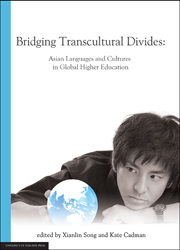Book contents
- Frontmatter
- Contents
- Acknowledgements
- List of Contributors
- Foreword
- Part I Another pedagogy is possible
- Part II Re-locating teaching and learning
- Part III Transforming curriculum in Asian language teaching
- Part IV Capitalising on Asian social and cultural studies in contexts of diversity
- Part V Bridging learning gaps
- 11 Chinese culture and plagiarism: A convenient cause for an inconvenient issue in the academy
11 - Chinese culture and plagiarism: A convenient cause for an inconvenient issue in the academy
from Part V - Bridging learning gaps
Published online by Cambridge University Press: 05 June 2013
- Frontmatter
- Contents
- Acknowledgements
- List of Contributors
- Foreword
- Part I Another pedagogy is possible
- Part II Re-locating teaching and learning
- Part III Transforming curriculum in Asian language teaching
- Part IV Capitalising on Asian social and cultural studies in contexts of diversity
- Part V Bridging learning gaps
- 11 Chinese culture and plagiarism: A convenient cause for an inconvenient issue in the academy
Summary
There is a most absurd and audacious Method of reasoning avowed by some Bigots and Enthusiasts, and through Fear assented to by some wiser and better Men; it is this. They argue against a fair Discussion of popular Prejudices, because they say, tho’ they would be found without any reasonable support, yet the Discovery might be productive of the most dangerous Consequences. Absurd and blasphemous Notion! As if all Happiness was not connected with the Practice of Virtue, which necessarily depends on the Knowledge of Truth.
(Edmund Burke, A vindication of natural society, 1757).The internationalisation of the Australian higher education sector is not a recent phenomenon. As early as 1904, Asian international students were pursing tertiary studies in Australia (Radford, Ongkili & Toyoizumi, 1984, cited in Burke 2006, p. 333). However, the numbers were low and only increased significantly with the introduction of the Colombo Plan in 1950 as the Australian government provided scholarships for students from developing countries to study in Australia. These scholarships were highly competitive and recipients were selected primarily on the basis of their academic performances. Then, the introduction of full-fee paying places for international students in 1985 changed the make-up of foreign students coming to Australia, as academic results no longer constituted the primary consideration for gaining admission. Due to the income generated from enrolling international students, they became an attractive recruitment target.
- Type
- Chapter
- Information
- Bridging Transcultural DividesAsian Languages and Cultures in Global Higher Education, pp. 253 - 268Publisher: The University of Adelaide PressPrint publication year: 2012
- 2
- Cited by



